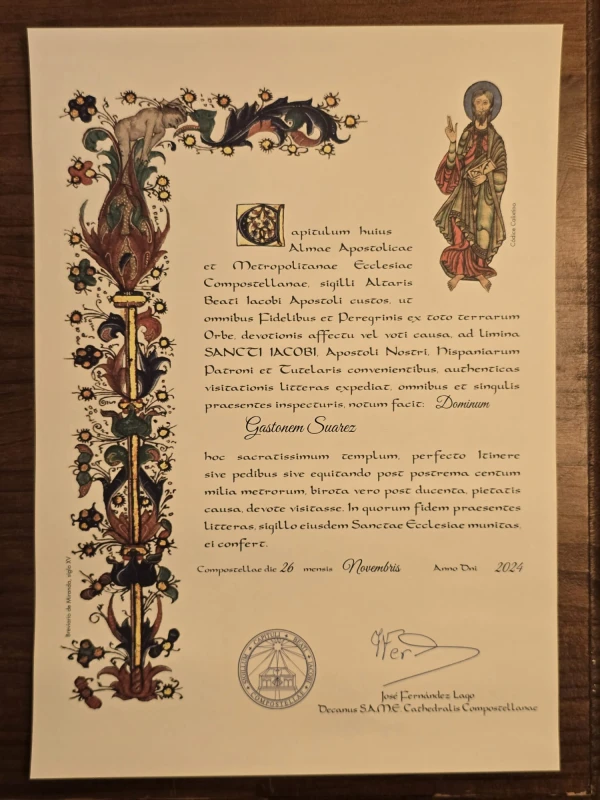Gastón Suárez is 29 years old and is sitting at home in Santa Fe (Argentina). Next to him, a statuette that symbolizes a milestone on the Camino de Santiago, and his credentials with 109 stamps, which reflect the stages he walked between August and November to unite the eternal city, Rome, and the goal of millions of Catholic pilgrims: the Cathedral of Santiago de Compostela. Between one and the other there are 3,154 kilometers and as many thousands of anecdotes, memories, places and people that will remain in your memory.
During the 109 stages of the journey, Gastón documented a large number of moments through his Instagram account, where as he walked, his virtual followers accompanied the journey.
Receive the main news from ACI Prensa by WhatsApp and Telegram
It is increasingly difficult to see Catholic news on social media. Subscribe to our free channels today:
The first stages, adjusted to the original plan, Gastón walked with his father, Mariano. Uniting Rome and Santiago de Compostela was for them a shared dream that began to take shape in March 2022, after having made the pilgrimage together from Lourdes (France) to Santiago.
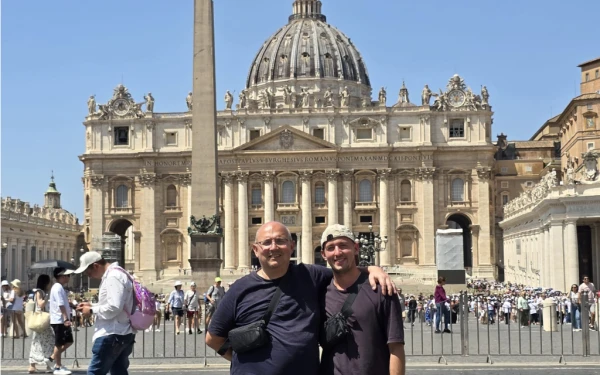
Gastón was living in Australia and when everything was ready, he returned to Argentina to finish planning this Camino with his father. “We prepared a little and left for Europe,” he remembers. “It was Mariano’s dream, and my dream was to do it with him,” he says.
His father, Gastón admits, is more religious than him. But although “for a time I was a little separated from the Church, with the previous path I took, and with this one, my faith has grown a lot,” he says.
“The trip had a motivation of adventure, of a father-son relationship, but it also had, of course, a religious motivation,” he clarifies. Some of the experiences along the way, “one can only give meaning to if one believes in God,” he considers.
“If I didn’t believe in God, in the Virgin, I couldn’t have done what I did,” he summarizes.
“You have to keep walking”
A few days after starting, something changed the duo’s plans: Mariano’s feet began to hurt until, on medical advice, he was forced to leave the road and return to Argentina.
“For me it was a hard blow, because it was a path that we had planned to take together, and it was not going to be the same to do it alone,” Gastón recalls. “We talked, we cried, that day was very hard, and he asked me what I wanted to do, and there was something inside me that told me: even if you are alone, you have to keep walking.”
However, from Argentina, Mariano continued to be part of the journey, managing the routes, indicating where it was best for him to go. “Without dad, I think I wouldn’t have been able to finish it, I wouldn’t have gotten to where I got. He helped me at all times,” says Gastón.
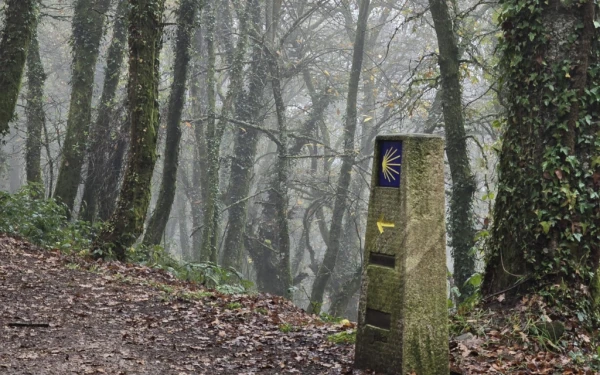
“I thought I could die”
It took more than 100 days and countless moments. The most difficult day, he remembers, was in France, when he chose to do a stage climbing to the top of a mountain. “There was a tremendous wind, it was literally walking on the top of the mountain. The trail disappeared, there were no marks, there was nothing,” he describes. “I prayed like never before in my life, I was very afraid,” he remembers, and summarizes: “I thought I could die that day.”
“That experience made me value life more, the fragility of life,” reflects the young man.
“Be open to gifts”
But there were also beautiful moments, like his birthday. “I had spent the night at the house of a priest, Father Alexander who is from Colombia and is working in France, and he received me at his house the day before my birthday.”
“I told him: Father, tomorrow is my birthday, and he remembered, and since he had nothing in the house, he didn’t have a cake, he grabbed a melon, broke it in half, put a candle on top, and sang me the happy song. birthday, which was unforgettable,” he values. That same day, the host family that was going to receive him did not appear, but the path took him to a group of pilgrim women who offered him lodging and celebrated his birthday together.
That made him think about “the importance of being open to gifts,” he says. “I thought they had abandoned me, but there really were other plans for me that day, these were inexplicable things along the way, which made me realize that I was not walking alone.”
The priests who led the way
“The best people we have crossed along the way were from the Church, they were priests. One of them, Don Paolo, in Italy. I’m going to remember it all my life. He told me: ‘The pilgrim is sacred’, and he gave me free lodging and free food, he did not accept that I left him a donation,” he recalls.
“Also Father Alexander, who told me ‘My house is your house’, and told me: ‘Where one eats, two eat.’ And in France, with Mariano, Father Armand washed our feet, and he let a person who was homeless stay, he welcomed him for a few days and we shared dinner with that person,” he lists.
“Those three people marked my path a lot,” he says.
The road signs
In that sense, he highlights the spiritual dimension of the pilgrimage: “There were inexplicable situations. One day I arrived at a very tired place, I had no confirmed accommodation, I entered the church and a woman told me: ‘I was waiting for you.’ And I had never spoken to that woman,” Gastón recalls, surprised. “How did you recognize me? What if I arrived a little earlier or a little later? Or what if he didn’t enter the church where she was? “That makes me understand that I was not walking alone.”
In that sense, Gastón highlights the importance of “capturing the signals that the road sends you. For example, I could have gone somewhere else on my own, but God put her there in that place, at that moment, for me to come across her and offer me a place, it is inexplicable.”
There were also days of sadness. “My sister, María Candelaria, was hospitalized, she had a very high fever, she was hospitalized for about three, four days and well, that hit me a lot for not being close to her.”
However, in those days the reunion happened: In Lourdes, France, his father returned to finish the journey with him. “The moment my sister was hospitalized, she found us in Lourdes, so we also took the opportunity to pray a lot in that place, which is impressive,” he highlights.
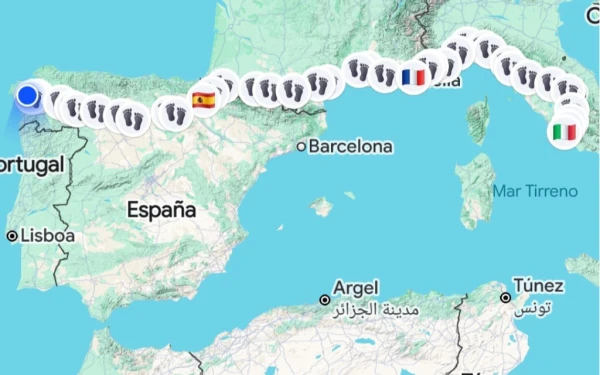
“If you trust in yourself and believe in God, you will never walk alone”
The greatest lesson that the path left him, he admits, is that “anything is possible if you set your mind to it.”
“As I also said in a video, if you trust in yourself and believe in God, you will never walk alone,” he adds. “The path is a metaphor for life, of going step by step, always moving forward, even if there are obstacles on the way, like a mountain, like a river, you always have to go forward,” he encourages.
Regarding physical condition, Gastón considers that his body was with him. “The body, the mind and the faith, of course.”
The entire tour is documented in videos and photos that can be seen on the Instagram account @camino.roma.santiago. There, Gastón reflected his daily life, the good and bad moments, recommendations and tips for pilgrims, and answered questions from his followers as he went. “As you see in the videos, I am a transparent person, I show everything,” he says.
“Every day was unique, every day had its own thing, there were no ugly days. Although there were days, for example, of a lot of rain, that we ended up soaked, the path is also like that: not every day can be sunny and have perfect weather,” he acknowledges, but “you have to adapt, and get the best out of yourself. ”.
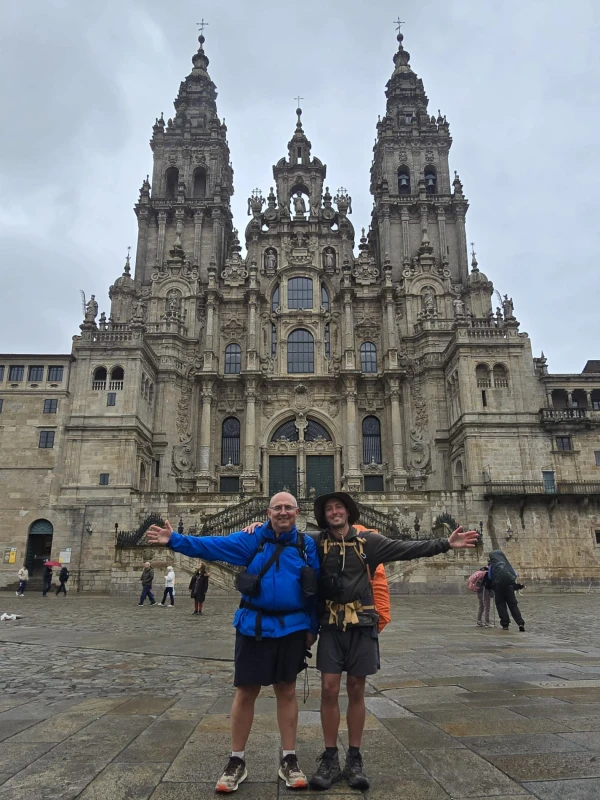
“There is nothing like the Camino de Santiago”
“I love walking, I love the path, I love that atmosphere that is generated on the path, of the hostel, of the pilgrims, of meeting people and saying ‘good way’. Go to the pilgrim’s Mass and have the father give you a blessing. “You feel part of something very big doing the Camino de Santiago,” he summarizes.
“The only thing that matters on the path is walking, it is the next step, there are no external problems on the path. You also isolate yourself a little from everything that happens,” he admits. “I’m not saying it’s okay, you shouldn’t forget what’s happening at home or with your family, but all you do is walk, get from one point to another, 100%.”
If he had to give a recommendation to someone who is going to undertake the Camino de Santiago, Gastón does not hesitate: “Let them do it.” And he adds: “It is the best experience one can have in their life. There is nothing like the Camino de Santiago, no other trip is like it, it is unique. And one does not come out of that pilgrimage or that adventure the same. And if you are afraid, do it anyway.”
“And you never walk alone. It could be with a friend, with a family member, or with God. But you are never alone on the path,” he reiterates.
